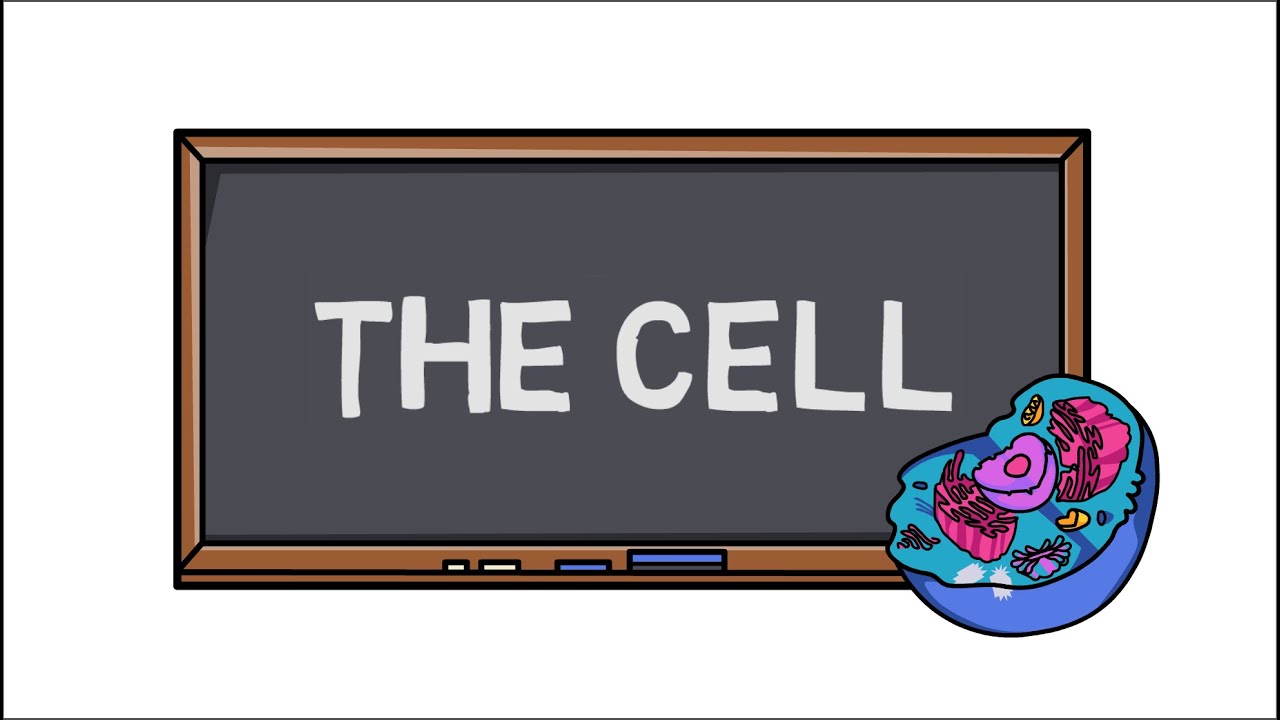Biology: Cell Structure I Nucleus Medical Media
Summary
TLDRThis script explores the fundamental nature of cells, the building blocks of life, highlighting their common features: a cell membrane, cytoplasm, and DNA. It distinguishes between eukaryotic cells, found in complex organisms like plants and animals, and prokaryotic cells, like bacteria, which lack a nucleus. The script delves into the roles of various organelles within eukaryotic cells, such as the nucleus, ribosomes, endoplasmic reticulum, Golgi apparatus, lysosomes, mitochondria, and chloroplasts in plant cells. It also touches on unique structures like cilia and flagella, emphasizing the cell's complexity and specialization.
Takeaways
- 🌟 Cells are the smallest living units of an organism and share three common features: a cell membrane, cytoplasm, and DNA.
- 🔬 Eukaryotic cells are more complex and contain organelles, including a nucleus, and are found in plants and animals.
- 🌱 Prokaryotic cells, like bacteria, lack a nucleus and membrane-enclosed organelles but still possess genetic material.
- 🔬 Organelles are specialized parts within a cell that perform unique functions, such as the nucleus being the control center containing DNA.
- 🧬 Chromatin is the form of DNA found within the nucleus, which condenses into chromosomes during cell division.
- 🌀 Ribosomes, made in the nucleolus, are responsible for protein synthesis and can be found in the cytoplasm or attached to the endoplasmic reticulum (ER).
- 🚛 The endoplasmic reticulum serves as a passageway for transporting materials, with 'rough' ER having ribosomes and 'smooth' ER not having them.
- 📦 The Golgi apparatus customizes proteins by folding them into usable shapes or adding materials like lipids or carbohydrates.
- 💧 Vacuoles are storage structures, with the central vacuole in plant cells storing water.
- 🗑 Lysosomes act as the cell's garbage collectors, breaking down damaged or worn-out cell parts with enzymes.
- 💪 Mitochondria are the powerhouse of the cell, producing ATP through cellular respiration for energy.
- 🌿 Plant cells have a cell wall for shape, support, and protection, unlike animal cells which do not.
- 🌿 Chloroplasts, found in plant cells, are the site of photosynthesis and contain the green pigment chlorophyll.
- 🚶 The cytoskeleton maintains cell shape and includes microfilaments and microtubules.
- 🏞️ Unique structures like cilia in human respiratory tract cells and flagella in some bacteria and human sperm cells aid in movement or trapping particles.
Q & A
What are the three common features of all cells?
-All cells have a cell membrane, cytoplasm, and DNA. The cell membrane separates the inside of the cell from its environment, cytoplasm is a jelly-like fluid, and DNA is the cell's genetic material.
What differentiates eukaryotic cells from prokaryotic cells?
-Eukaryotic cells have organelles, including a nucleus and other special parts, and are found in more complex organisms like plants and animals. Prokaryotic cells lack a nucleus and membrane-enclosed organelles, and they are typically found in unicellular organisms such as bacteria.
What is the function of the nucleus in a eukaryotic cell?
-The nucleus serves as the control center of the cell, containing DNA or genetic material that dictates what the cell will do and how it will do it. It also contains a nucleolus where ribosomes are made.
What is chromatin and how does it relate to chromosomes?
-Chromatin is the tangled, spread-out form of DNA found inside the nuclear membrane. When a cell is ready to divide, DNA condenses into structures known as chromosomes.
What is the role of ribosomes in the cell?
-Ribosomes are responsible for synthesizing or making proteins. They can be found in the cytoplasm or attached to the endoplasmic reticulum.
What are the two types of endoplasmic reticulum and their functions?
-There are two types of ER: rough ER, which has ribosomes attached and is involved in protein synthesis, and smooth ER, which lacks ribosomes and is involved in lipid synthesis and detoxification processes.
What is the primary function of the Golgi apparatus in the cell?
-The Golgi apparatus receives proteins and other materials from the endoplasmic reticulum in vesicles and customizes them into forms that the cell can use, such as by folding proteins into usable shapes or adding lipids or carbohydrates.
What is the purpose of vacuoles in a cell?
-Vacuoles are sac-like structures that store different materials. In plant cells, the central vacuole typically stores water and helps maintain the cell's shape.
What is the role of lysosomes in a cell?
-Lysosomes act as the garbage collectors of the cell, taking in damaged or worn-out cell parts and breaking down this cellular debris using enzymes.
How do mitochondria contribute to cellular activities?
-Mitochondria are the powerhouse of the cell, producing ATP molecules during cellular respiration, which provide energy for all of the cell's activities.
What is the function of the cytoskeleton in maintaining cell shape?
-The cytoskeleton, which includes microfilaments and microtubules, helps maintain the cell's shape and structure. It also plays a role in cell movement and intracellular transport.
What is unique about chloroplasts in plant cells?
-Chloroplasts are organelles found in plant cells where photosynthesis occurs. They contain the green pigment chlorophyll, which captures sunlight for energy.
How do cilia and flagella differ in function and structure?
-Cilia are microscopic hair-like projections that move in waves to trap and expel inhaled particles in the human respiratory tract. Flagella, like the one found in sperm cells, are more like tails that help cells move or propel themselves.
Outlines

此内容仅限付费用户访问。 请升级后访问。
立即升级Mindmap

此内容仅限付费用户访问。 请升级后访问。
立即升级Keywords

此内容仅限付费用户访问。 请升级后访问。
立即升级Highlights

此内容仅限付费用户访问。 请升级后访问。
立即升级Transcripts

此内容仅限付费用户访问。 请升级后访问。
立即升级浏览更多相关视频

Prokaryotic vs Eukaryotic Cells - High School Biology

GCSE Biology - Cell Types and Cell Structure #2

Organelas Celulares : Estrutura celular e citoplasma - Animação 3D

Cells for Kids | Learn about cell structure and function in this engaging and fun intro to cells

Struktur dan Fungsi Komponen Sel Tumbuhan

The Cell | Discovery of first Cell | Cell Theory |
5.0 / 5 (0 votes)
